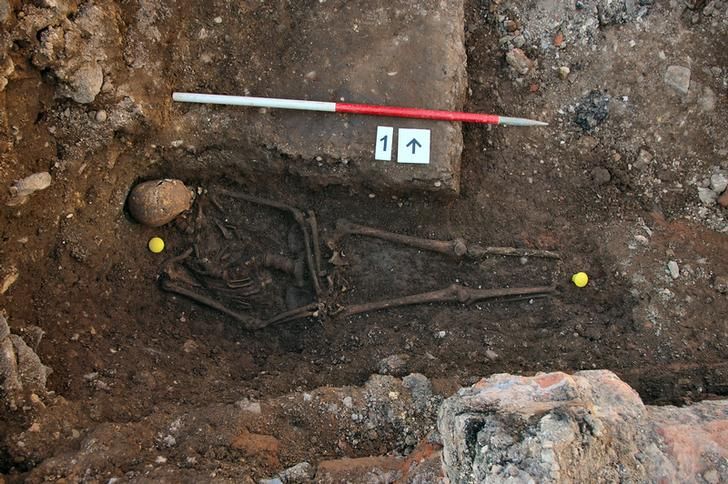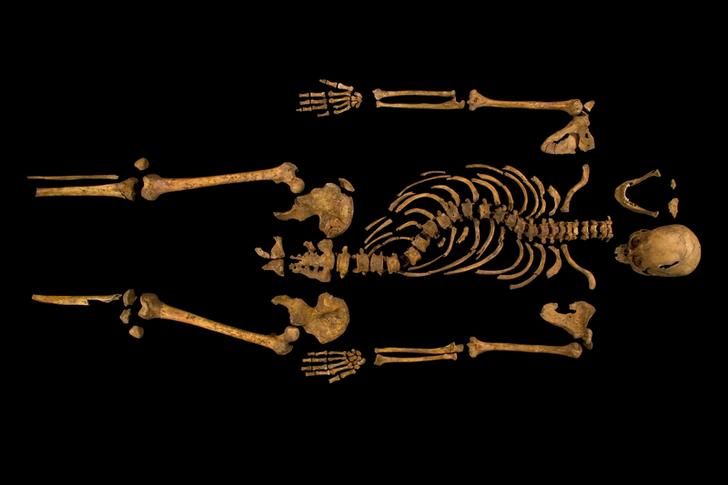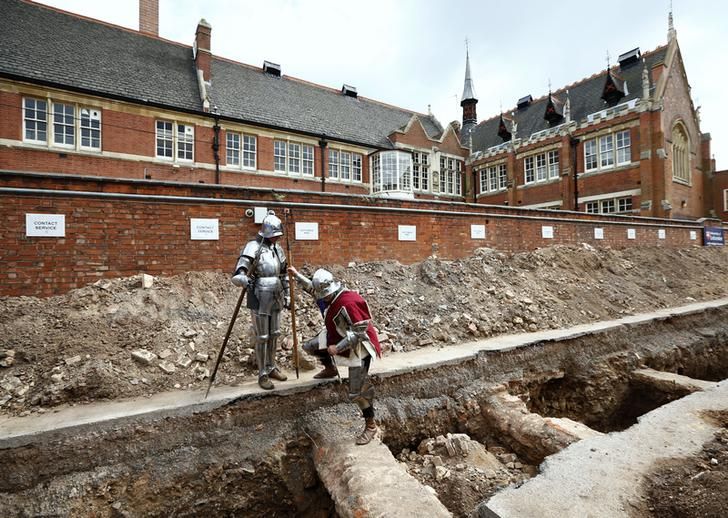King Richard III Found: Pictures Of His Skull, Grave And Where They Discovered The Missing British Monarch [SLIDESHOW]
Scientists announced on Monday that they had found the remains of King Richard III under a parking lot in Leicester, England.
University of Leicester researchers confirmed the identity of the skeleton after tests on the remains, which were discovered last year, prove "beyond reasonable doubt" that it is the king. King Richard III died at the Battle of Bosworth Field in 1485 and has been missing for centuries.
"Richard III, the last Plantaganet King of England, has been found," Richard Taylor, the university's deputy registrar, confirmed at a press conference.
Bone specialist Jo Appleby added that the study of the bones provided "a highly convincing case for identification of Richard III."
Officials also confirmed that the skeleton matched a DNA sample from a distant living relative of Richard's sister.
Geneticist Turi King told reporters Michael Ibsen a Canadian carpenter living in London, share with the skeleton a rare strain of mitochondrial DNA. She said combined with the archaeological evidence, that left little doubt the skeleton belonged to Richard.
King Richard III ruled England for two years, from 1483 until his death in 1485. He was the last king of the House of York and the last of the Plantagenet dynasty. His brief reign saw the introduction of the right to bail and the lifting of restrictions on books and printing presses.
On Aug. 22nd, 1485, Richard’s rule was challenged and he was defeated and killed by the army of Henry Tudor, who took the throne as King Henry VII.
Richard III Society spokesperson Philippa Langley, who helped launch the search for the king, said she could scarcely believe her quest had paid off.
"Everyone thought that I was mad," she said. "It's not the easiest pitch in the world, to look for a king under a council car park."
Now, she said, "a wind of change is blowing, one that will seek out the truth about the real Richard III."
As the location of King Richard III’s body has been unknown for centuries, skeptics believed he he was buried by the Franciscan monks of Grey Friars at their church in Leicester, 100 miles (160 kilometers) north of London. The church was closed and dismantled after King Henry VIII dissolved the monasteries in 1538, and its location eventually was forgotten.
The search for King Richard III’s body eventually became relevant last September when archaeologists searching for Richard dug up a battle-scarred skeleton of an adult male who appeared to have died in battle.
According to Appleby, tests on the remains revealed 10 injuries to the body including those inflicted by weapons like swords, daggers and halberds. The findings are consistent with accounts of Richard being struck down in battle — his helmet knocked from his head — before his body was stripped naked and flung over the back of a horse in disgrace.
She said some scars, including a knife wound to the buttock, bore the hallmarks of "humiliation injuries" inflicted after death.
In addition, researchers conducted a battery of scientific tests, including radiocarbon dating to determine the skeleton's age. They found the skeleton belonged to a man aged between his late 20s and late 30s who died between 1455 and 1540. Richard was 32 when he died in 1485.












© Copyright IBTimes 2024. All rights reserved.






















